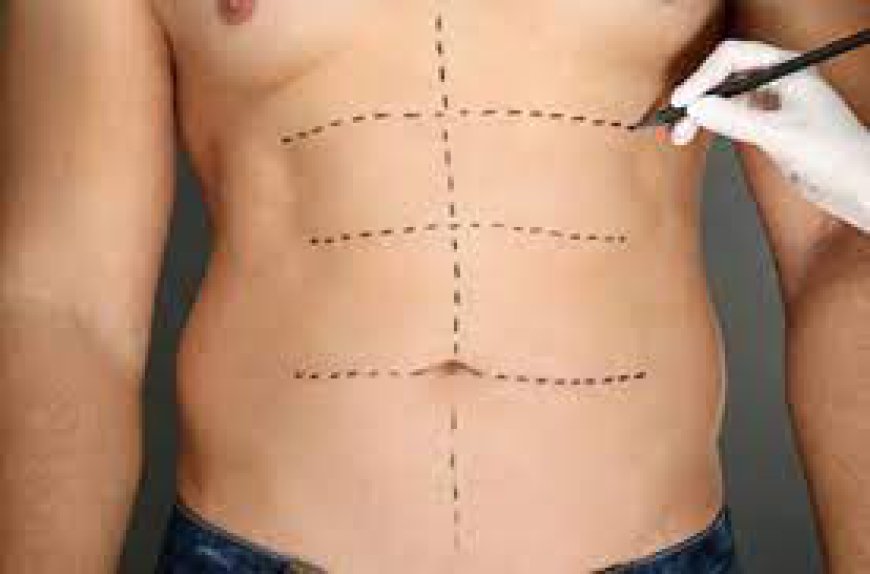Liposuction: A Comprehensive Guide
Liposuction surgery is a cosmetic procedure that removes excess fat deposits from specific areas of the body, improving contours and proportions. It's commonly performed on the abdomen, thighs, buttocks, and arms.

Liposuction, also known as lipoplasty or simply lipo, is a popular cosmetic surgery procedure aimed at removing excess fat deposits and reshaping specific areas of the body. It is designed to enhance the body's contours and proportions, providing a more aesthetically pleasing appearance. While not a substitute for weight loss Liposuction Surgery in Dubai can address stubborn fat areas that are resistant to diet and exercise. This comprehensive guide will delve into the details of liposuction, including its types, procedure, benefits, risks, recovery, and more.
Types of Liposuction
1. Tumescent Liposuction
Tumescent liposuction is the most common form of the procedure. It involves injecting a large volume of a tumescent solution (a mixture of saline, lidocaine, and epinephrine) into the targeted fat areas. This solution numbs the area, reduces blood loss, and makes the fat easier to remove. A small cannula is then used to suction out the fat.
2. Ultrasound-Assisted Liposuction (UAL)
UAL uses ultrasonic vibrations to liquefy fat cells before they are removed. This method is particularly effective for fibrous areas of the body, such as the back or male chest. It can also help tighten the skin during the process.
3. Laser-Assisted Liposuction (LAL)
LAL employs laser energy to liquefy fat cells. The laser is delivered through a fiber threaded through a small cannula. This technique can also stimulate collagen production, potentially improving skin elasticity.
4. Power-Assisted Liposuction (PAL)
PAL involves the use of a vibrating cannula that helps break up fat cells, making them easier to remove. This technique can be less physically taxing for the surgeon and may result in a quicker procedure.
The Procedure
Preoperative Consultation
Before undergoing liposuction, a thorough consultation with a qualified plastic surgeon is essential. During this consultation, the surgeon will assess the patient's medical history, discuss goals and expectations, and determine if the patient is a good candidate for the procedure.
Anesthesia
Liposuction can be performed under local anesthesia, intravenous sedation, or general anesthesia, depending on the extent of the procedure and the patient's preference.
Incisions and Fat Removal
Small incisions are made in inconspicuous areas near the targeted fat deposits. Through these incisions, a cannula is inserted to loosen excess fat. The fat is then suctioned out using a surgical vacuum or syringe.
Closing Incisions
After fat removal, the incisions are closed with sutures or left open to drain, depending on the surgeon's technique. Compression garments are usually applied to help reduce swelling and support the new contours.
Benefits of Liposuction
- Targeted Fat Reduction: Liposuction can effectively remove stubborn fat from areas like the abdomen, thighs, buttocks, arms, neck, and chin.
- Improved Body Contours: The procedure can enhance the overall shape and proportion of the body.
- Boost in Confidence: Achieving desired body contours can lead to improved self-esteem and confidence.
- Minimal Scarring: The small incisions used in liposuction typically result in minimal scarring.
Risks and Considerations
While liposuction is generally safe, it is not without risks. Potential complications include:
- Infection: As with any surgical procedure, there is a risk of infection.
- Bleeding: Excessive bleeding can occur during or after the procedure.
- Anesthesia Complications: Reactions to anesthesia can vary.
- Contour Irregularities: Uneven fat removal can result in lumps or depressions in the skin.
- Fluid Accumulation: Seromas (pockets of fluid) can develop post-surgery.
- Numbness: Temporary or permanent numbness in the treated areas.
Recovery and Aftercare
Immediate Recovery
Post-surgery, patients are monitored in a recovery area. Most can go home the same day, but some may require an overnight stay.
Initial Healing
Swelling, bruising, and discomfort are common in the first few days. Pain can be managed with prescribed medications. Wearing compression garments helps reduce swelling and supports healing.
Long-Term Recovery
Swelling may persist for several weeks, with final results becoming more apparent as the swelling subsides. Most patients can return to work within a week and resume normal activities in about 4-6 weeks.
Maintaining Results
liposuction for men results are long-lasting if the patient maintains a stable weight. A healthy diet and regular exercise are essential to prevent the return of fat deposits.
Conclusion
Liposuction is a highly effective procedure for contouring the body and removing unwanted fat. However, it is essential to have realistic expectations and understand both the benefits and risks involved. Consulting with a board-certified plastic surgeon and following their advice is crucial for achieving the best possible outcome. With proper care and maintenance, liposuction can lead to a more sculpted and confident self.

 hudabatool778
hudabatool778